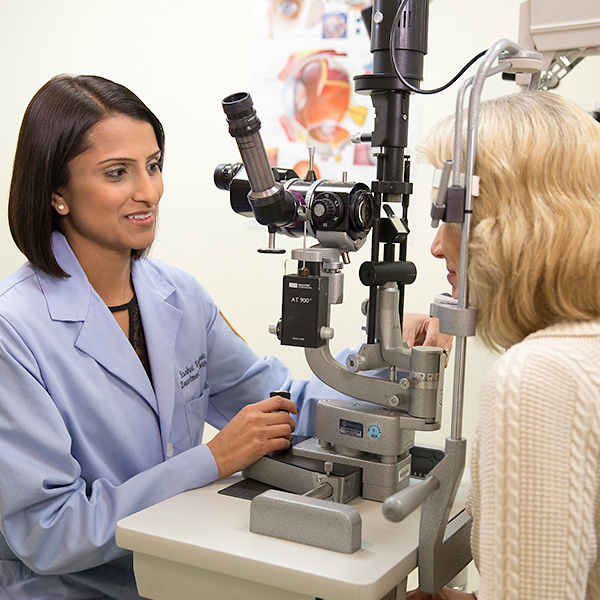Visual Disturbances
Overview and Facts about Visual Disturbances
There are numerous types of visual disturbances which can hinder normal sight. Each condition has a different cause; some may be hereditary, while others may be due to aging or injury. Some affect color vision, while others impact visual clarity close up or at a distance.
Though many visual disturbances are temporary or can be treated, some are permanent and could be a symptom of a larger issue that should be addressed as soon as possible.
If you are experiencing visual disturbances that interfere with your daily routine, contact a specialist who evaluates a range of ophthalmology conditions for more information.
Signs and Symptoms of Visual Disturbances
Visual disturbances disrupt your normal visual function. There are a variety of disturbances that can impact your eyesight.
Depending on the type of disturbance you are experiencing, your ability to complete day-to-day tasks may be interrupted. It is important to consult with an eye doctor to asses whether your eye condition is temporary or a sign of a larger issue.
Some of the most common types of visual impairment are:
- Double vision: Double vision, also known as diplopia, cause you to see two objects when you should only be seeing one. There are two types of double vision. Monocular double vision only affects one eye and occurs with only one eye open. Binocular double vision affects both eyes and happens with both eyes open. Double vision can be caused by cataracts or corneal irregularities, but could also be a symptom of serious conditions such as brain tumors or aneurysms.
- Blurred vision: This can occur in one or both eyes. Sometimes vision may be clear within a close range gradually blurring out as a distance, or vice versa. It can be a result of nearsightedness, farsightedness, astigmatism or the onset of eye disease. If it is caused by an eye abnormality, it can be treated with corrective lenses.
- Colorblindness: Inherited red-green color blindness is the most common form. There is currently no treatment, though it can be corrected slightly using tinted lenses to sharpen the contrast between colors. Complete color blindness is rare. People who are totally colorblind see only shades of grey.
- Halos: Halos are bright circles of light formed around light sources such as lamps or headlights. Halos can occur due to migraines, but can be related to damage to your cornea or the onset of glaucoma. They can be uncomfortable and sometimes incapacitating.
Causes and Risk Factors of Visual Disturbances
The causes and risk factors will depend on the type of visual disturbance you are experiencing. Some possible reasons for a range of visual disturbances are:
- A change in, or damage to, your eye’s lens, cornea or retinal surface
- Hereditary or genetic disposition
- Injury to your eyes, face or brain
- Nearsightedness or farsightedness
- Poorly aligned eyes or eye strain
- Headache or migraine
- Certain types of cancer
- Nerve damage
- Cataracts
- Glaucoma
- Diabetes
- Dry eyes
- Aging
Tests and Diagnosis of Visual Disturbances
Your eye doctor will take your medical history and perform an eye examination. This may include a vision test, which evaluates your overall eyesight. An eye exam assesses your visual fields, the structure of your eye, and neurological function.
Your eye doctor may also order an MRI to check for problems with the brain and nervous system in relation to your vision. If your visual disturbance is due to damage to the optic nerve, it may be permanent.
These tests will help diagnose your specific visual disturbance, and whether it is limited to your eyes or related to a disease.
Treatment and Care for Visual Disturbances
Once your specific visual disturbance is identified, your eye doctor will offer a recommended course of treatment.
In many cases, if diagnosed early enough, visual disturbances can be treated and cured. There are certain conditions that may be permanent.
Depending on the type of visual disturbance you are experiencing, the following may be recommended:
- LASIK or PKR to correct the range of vision
- Corrective lenses to help balance the focal range or brighten the contrast between colors
- Artificial tears to alleviate dry eyes
- Treatment for the underlying condition (i.e. diabetes)
If you are experiencing visual disturbances, you should seek medical advice as soon as possible to avoid causing permanent damage to your eyes.

Request an Appointment
Whether you are seeking routine eye care or have a specific vision issue, our team treats a wide range of eye diseases and conditions, including cataracts, glaucoma, macular degeneration and strabismus. Schedule an appointment today.
Schedule a Telehealth Appointment
